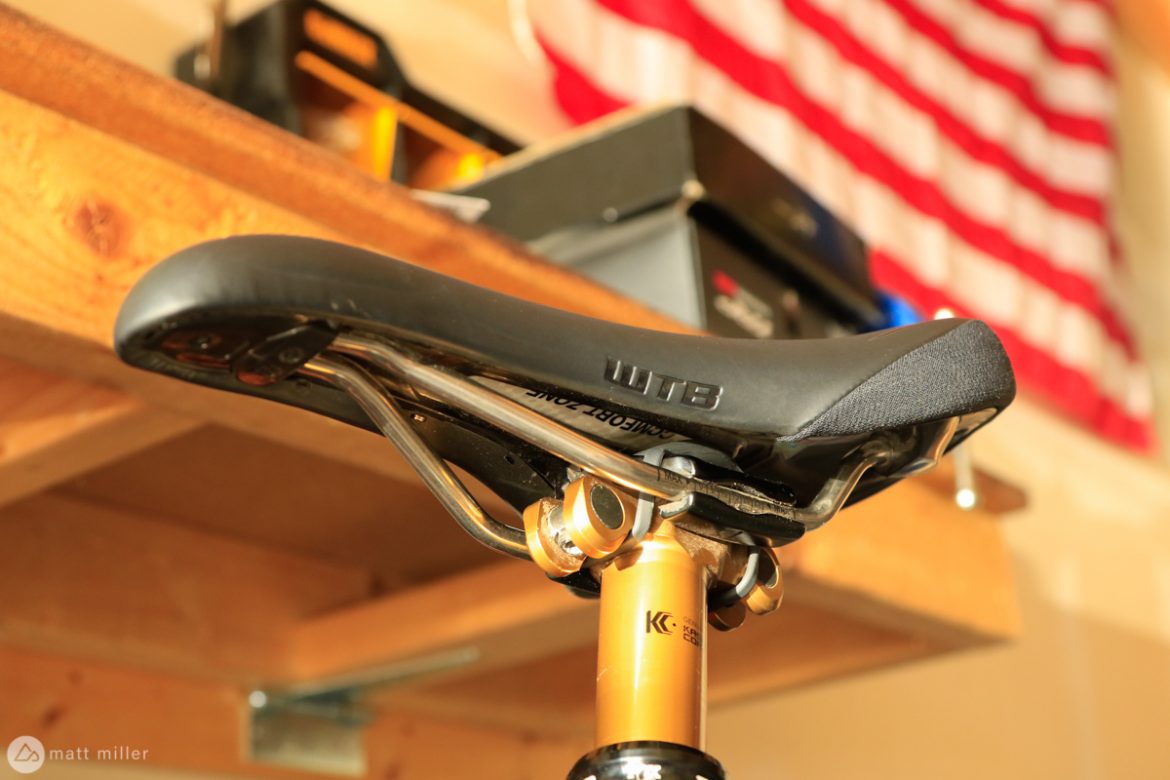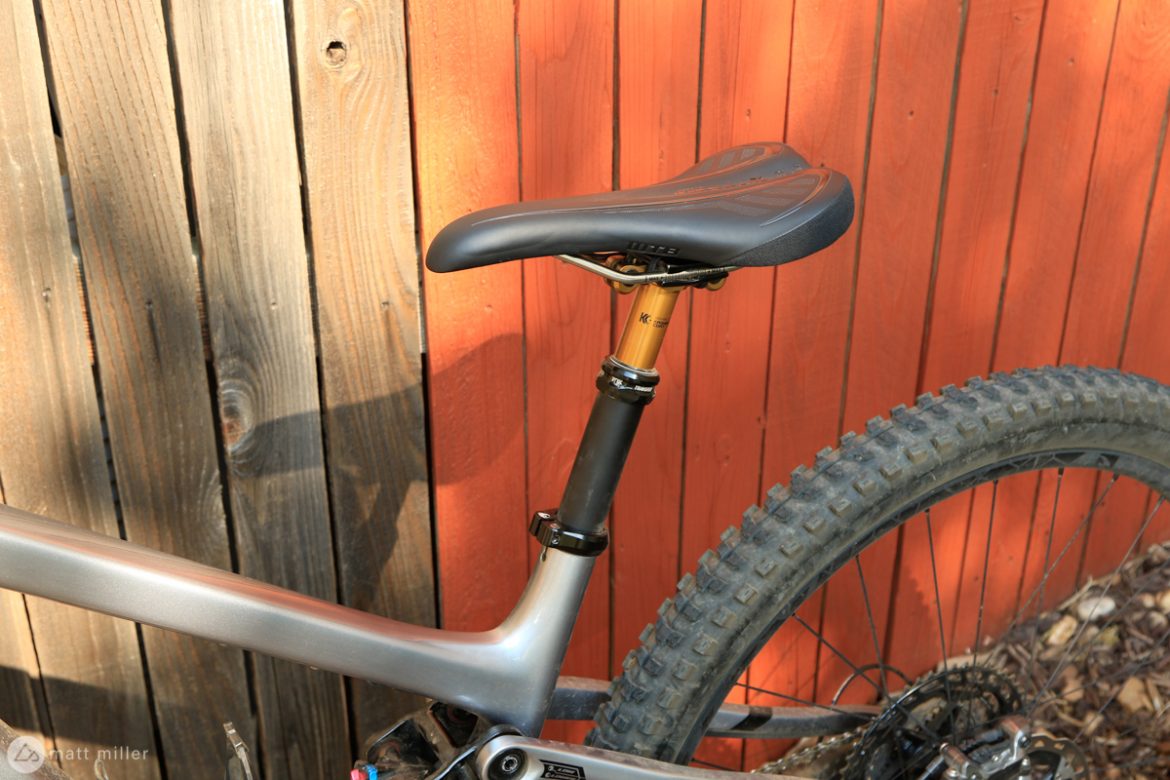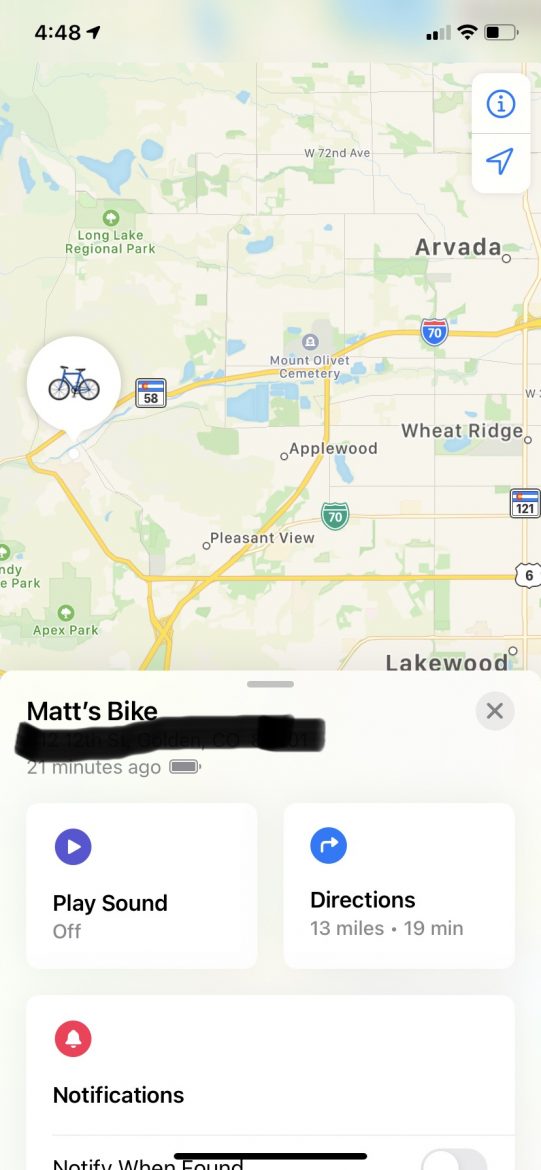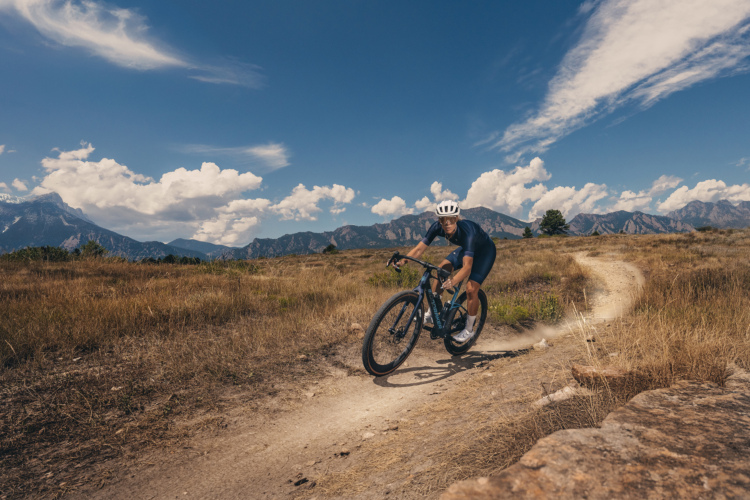
Twenty years ago, as a tender early-teen, I rode my BMX to a Wal-Mart and left it, unwisely, unlocked inside the entrance near the carts and vending machines. When my buddy and I came out five minutes later, my bike was gone. I’d spent a summer working a paper route to earn the cash for that bike and I was heartbroken that someone jacked it.
A community service officer took my friend and I around our small town to look for it, but it was gone, and I never saw it again, no matter how bad I wanted it to reappear.
I don’t think I’m the only person who’s dreamt of a planting a tracking device on their bike so that they could possibly recover it if it were stolen. When Apple released the Air Tag this year, a half-dollar-sized tracking device that runs on iPhone’s networks and allows people to track their items though the Find My iPhone app, a bike was one of the first things that came to mind for tracking – as did cameras, keys, and pets.
The Air Tags are $30 a pop, and as mentioned, about the size of a half-dollar, or a big quarter. They are about 4-5mm thick and weigh 11g. The device sends out a secure bluetooth signal to nearby Apple devices on the Find My network. When the location is detected, it will show up under your Find My app.
The Air Tag battery is said to last about a year and you can see the battery level in the app, so you don’t have to worry about it unexpectedly dying. When the battery does die, It’s replaceable with a CR2032 coin cell battery. Air Tags are water-resistant too and can be submerged in a meter of water for about 30 minutes.
If you’ve lost something, you can enable Lost mode on the Air Tag through your phone. When it’s detected in the network, you’ll get a notification on your device. You can set it to send a message to someone if they find your tag – obviously this may or may not be a good choice for a lost bike, if it were stolen rather than lost.
Apple says that only you can see where the AirTag is, and the tag doesn’t store your location data, and the company also says that it’s designed to discourage unwanted tracking. (We tested this too). If an AirTag is separated from the user for a while and starts traveling with someone else, the tag will play a sound to alert the person to its presence. So, if you have a tag on your bike, and it’s stolen, then enable lost mode.
Tracking the AirTag works a little differently depending on which iPhone you have. One of the coveted features is the Precision Finding feature, but this is only on iPhone 11 and up, where the phones get a UI Chip that finds the tag’s exact location.
If you’ve ever used an avalanche beacon, it’s similar to that, where the device should point you directly to the tag and tell you how far away it is. I on the other hand have an iPhone XR, and am limited to tracking the tag via Apple Maps. Air Tags work with any iPhone 6s and newer, and require iOS 14.5 software.
Tagging your bike

Setup on the Air Tag is as simple as can be: pull a plastic piece from the tag, select keys, or bike, or camera, or whatever from the list of choices, and select it as your Air Tag. It’s very easy and straightforward. The hardest part is finding real estate on your mountain bike where the tag is going to be discreet.
Trying to find a spot on my bike where the Air Tag wouldn’t be apparent was a real reminder of just how sleek mountain bike frames are. Without any sort of specially designed mount, there were almost zero good options. Initially, I tried using some electrical tape to stick it under my bottom bracket. It looked terrible and drew attention.
I grabbed a tool and tube strap that had a small pocket on it, and strapped it to the frame. I typically don’t ride with a tool strap, so this wasn’t my first choice, but it was more subtle than wrapping black tape around my bike.
The tool strap still didn’t sit right with me though. Browsing the internet, I came across a company called Miles Wide. They make some really cool bike accessories, like brake lever covers, rim tape, and a lot of other useful stuff. One of the products they had was a Fork Cork, which is a little plug that covers the bottom of your steerer tube.

With a bit if bubble wrap around the tag to keep it from rattling around, I shoved it up the steerer tube and corked the fork. Perfect!
Until I tested the tag through Find My. Because the Air Tag was now completely surrounded by aluminum, it wouldn’t read. I decided to keep the cork on the steerer tube, to shove a tire plug kit in, but unfortunately it wouldn’t work for my tracking device.
A bike with a storage or SWAT box would be ideal, but I’m not sure the Air Tag would read through carbon. I went back to the drawing board: Amazon Marketplace. There are dozens of options on Amazon. As usual, the quality varies. The best, or most concealed option are mounts that fit under water bottle bolts, but availability has been sparse. Some people are even using GoFundMe to 3D print these mounts, because a good hiding spot is hard to find. I bought two silicone straps for mine.
One was a sort of silicone zip tie for the tag, and the other was a dog tag holder. Again, much of this will depend on your bike and equipment, but I found that the dog tag holder, with each end strapped around a saddle bolt, tucked the Air Tag away best. It’s virtually invisible when glancing over the bike, and something that I feel most thieves will miss initially, unless they do a thorough examination before jacking the bike. Usually, people will want to grab the bike and get away as quickly as possible.
Potential problems
Now, the above isn’t to say that no one will notice after they steal the bike, but some thieves are smarter than others. More sophisticated bike thieves might be looking for an Air Tag. Less sophisticated thieves might not know what an Apple Air Tag is. Some might be parting the bike out, and trying to make as much money as possible. Some might just want a pair of wheels to get around town. If your thief has a bluetooth scanner, they may find the tag, but Apple says that Air Tags change frequency, making them harder to track.
I think when it comes down to it, no use of the Air Tag on a bike is going to be bulletproof. No matter how it’s installed, there’s a chance that someone will find the tag and throw it in the trash. In the best case scenario, it buys the bike owner some extra time to find their bike, but then they’ll have to grapple with how to recover it. Police departments don’t recommend trying to recover a bike yourself, and there’s a good chance they aren’t in a hurry to help you recover your bicycle either.

My experience has also been that the Find My app doesn’t track the tag as swiftly as I’d hoped. I thought I’d see the tag moving through my Find My app, like a blip on radar, getting farther away or moving closer. In reality, it can take a minute – or several – for the app to realize the location has changed. This might also improve on newer model iPhones, but it’s been quite slow at times for me. I likely wouldn’t be able to pinpoint a pair of keys if I had a tag on them, although you can make the tag play a ringing sound, which would work. Of course, making the tag play a sound can take some time to connect.
Even if the tag is in the same location, it will shift around on Apple Maps if you check at different times. This could put you, the stolen-bicycle recoverer scouring what may be a few square blocks trying to pinpoint the location. While a newer model iPhone may help pinpoint the Air Tag, this reviewer found out that’s usually the case only when in your own home. Tracking the Air Tag through walls, or even farther than 100 feet away can still be challenging with Precision Finding. If the thief takes the bike to an apartment complex, you’ve got your work cut out for you.
I planted the Air Tag in my partner’s car for a few days when she went to work (I told her), to see how the tag would move, and if it would alert her to the tag’s presence. I activated Lost Mode about two hours after she left. Well, she did receive a notice that an Air Tag was traveling with her, but it wasn’t until about six hours after it had been with her, and after I activated Lost Mode.
This is obviously what I hoped wouldn’t happen, as I don’t want my own Air Tag to narc me out to a thief that has my own bike. The success of the device might depend on if your thief is an Android or an iPhone person.
Closing thoughts

There are so many variables to using an Air Tag which will determine its viability as a stolen bike tracking device. The network and tracking depends on iPhones in the tag’s area, and fortunately in this case, iPhones are literally all over the world.
In a perfect scenario – after a thief has decided to steal your bike – they will not see the Air Tag, they will not own an iPhone, they will take it somewhere not too far away where there are other iPhone users nearby, and it will stay in that location until you have a decent shot at safely recovering the bike. Those are a lot of things that need to go right.
Some will decide that those variables are enough to cast this idea off and that’s fair. But for $40 (or about $99 for a four pack), including a case/strap/mount, the Air Tag could be one more factor in your favor. But, I’m still going to double check my insurance policy to make sure my bicycles are covered.














8 Comments
Aug 4, 2021
Aug 5, 2021
Aug 3, 2021
Aug 5, 2021
Aug 5, 2021
Aug 5, 2021
Aug 6, 2021
Aug 5, 2021